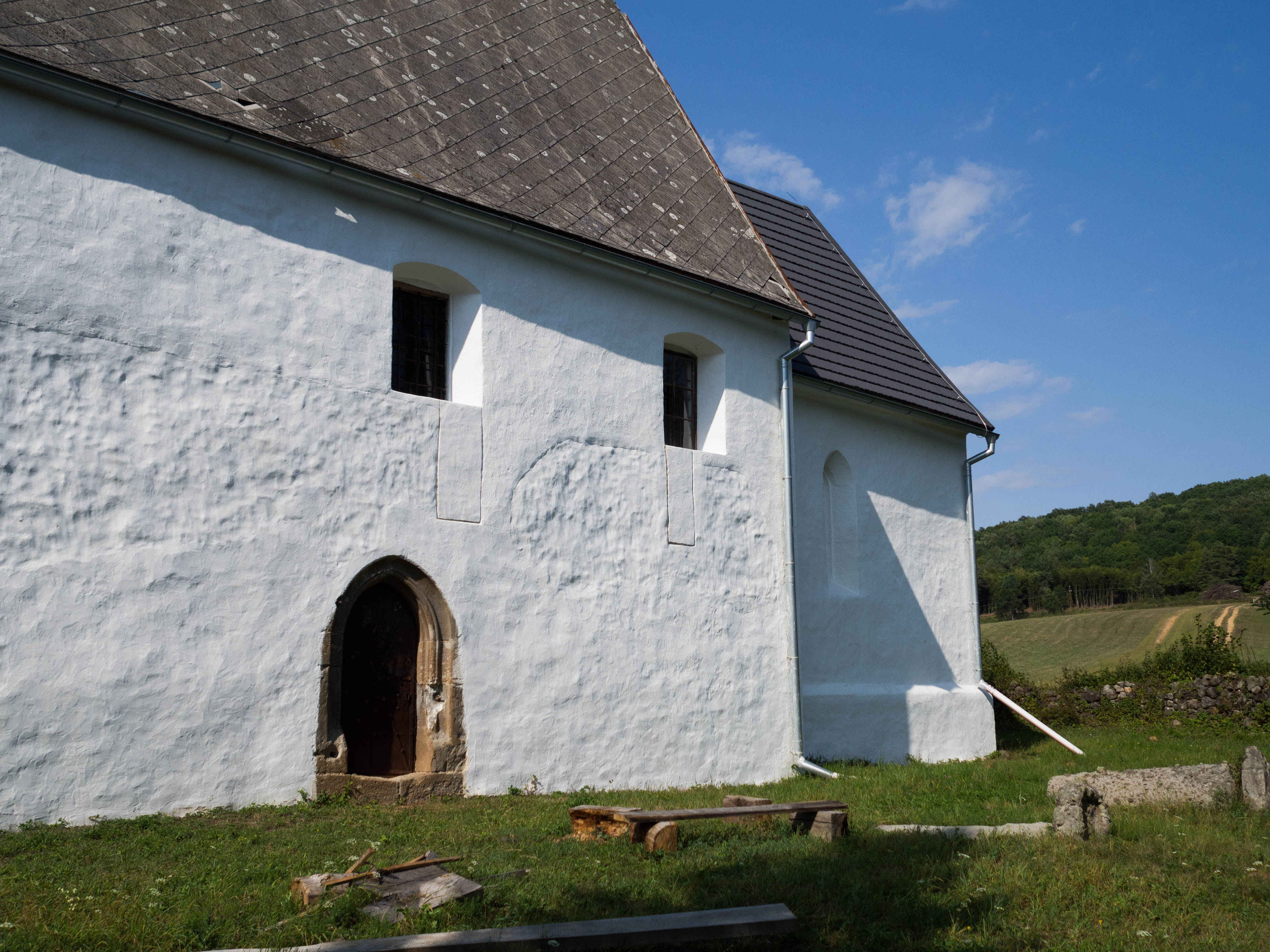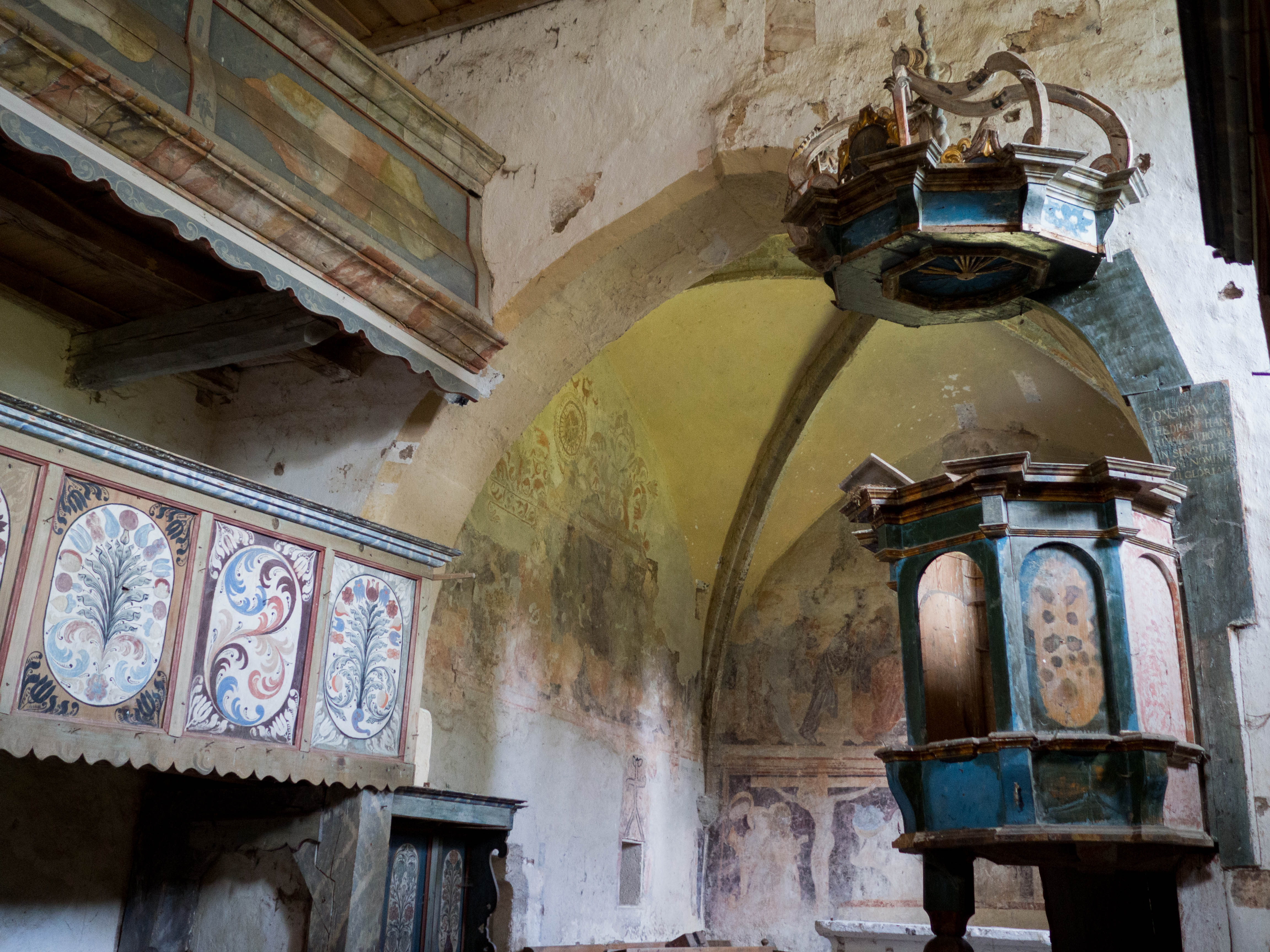A solitary church stands far from the village on a hill surrounded by meadows and fields lined with forests, in the middle of an old cemetery. The first mention of the village is from 1266 as Sancta Crux, the Holy Cross, which was also the dedication of the church, and points at the old settlement, where, according to some sources, the monastery should have stood. However, it is proven by researches that there was a Romanesque building on the site of the present church. The early Gothic building of the church, from the beginning of the 14th century, without a tower with tall gables from the nave and a chancel, was surrounded by a stone wall of which only the remains have been preserved.
The one-nave church with a rectangular chancel, vaulted with a Gothic cross-ribbed vault and an adjoining sacristy on the northern side, has survived almost intact, with the exception of the new slab ceiling (the original Renaissance ceiling captured on the photograph from the beginning of the 20th century has not survived). A curiosity of the church are the two wooden matroneums decorated with painted ornaments, which provided more space to seat the believers.
In 1903, I. Groh discovered medieval wall paintings in the church chancel, which he uncovered only partially and without fixation. In 1929, they were restored by the Czech restorer B. Jaroš. Despite the fact that large areas of paintings have been preserved only fragmentarily, their artistic level ranks them among the best works of the medieval paintings of the Gemer region from the period of the 1360s-1380s. The layout of the frescos is divided into three compact areas of the walls of the chancel interrupted by a window and the entrance to the sacristy. The scenes harmoniously follow each other in a regular division of three bands. They are partly covered by a Renaissance painted ornament from a later period. The paintings on the northern wall are the most damaged, where fragmentarily preserved figures of the apostles can be identified in the lower band. There is also a niche pastophorium (tabernacle) finished with a painted triangular gable, with an interesting cross in the form of tree branches, which we use as the church logo. On the eastern wall, in the upper band, there is a fragment of the scene of the Annunciation, in the middle band on the sides of the window, we find the continuation of a series of figures of the apostles. In the middle of the inferior band, there is a picture of a suffering Christ, surrounded by two scenes of the Crucifixion and the Descent from the cross. The southern wall of the chancel shows the same concept: in the upper strip, the original medieval painting was completely covered by a Renaissance floral ornament; below the window, the kneeling figure of an interceding archangel marks the final Resurrection of Christ with figures of Roman soldiers.
Despite the considerable loss of paintings, their author can be considered to be a cultivated painter with a good knowledge of perspective and painting simplification. Jesus is depicted here with a spirituality and piety that is unparalleled in the region. Further paintings are expected under the plaster of the Triumphal arch and on the walls of the nave.
The church has been unused for many years and has even been burgled. The altar‘s architecture is preserved in the deposit of the East Slovak Museum in Košice, the altar painting was stolen. The local congregation disappeared and was attached to the one in Ratková. The restoration of the church began in 2008 with the initiative of the “Zachráňme Rybník association“. In 2014, a restoration was carried out, recently the roof was renewed.
 |
|
| Architecture: gothic | Construction: early 14th century |
| Church: Lutheran Church | Patrocinium: Saint Cross |
| Circuit: Jelšava Circuit | |
| Contact person: Vladimír Vančík, chaplain |
| Phone number: +421 903 886 724 |























